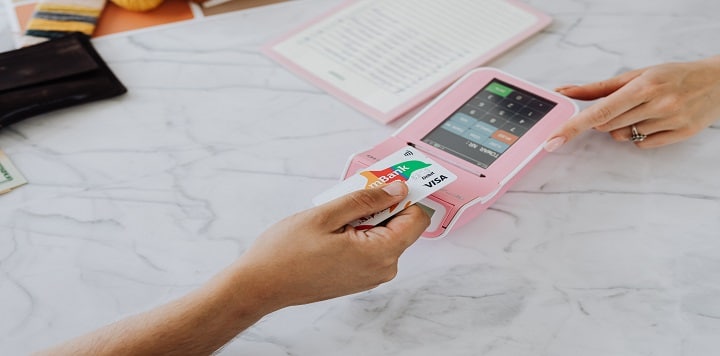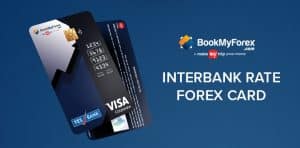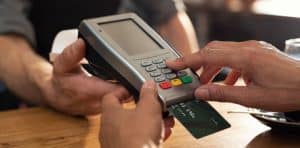Summary :- A Forex card and an INR Travel card are the two most common ways to carry money for a foreign trip. Understand the risks of carrying an INR card and the benefits of carrying a Prepaid Forex card when traveling abroad.
One of the most important decisions you’ll have to make when traveling overseas is how you’ll carry your money. In recent years, the use of forex cards as a means of carrying foreign currency has become increasingly popular among travelers. In simple terms, a Forex card is a prepaid card loaded with foreign currency. An INR travel card (also known as Rupee Travel Card) is nothing more than a conventional Debit/Credit card that many new-age fintech companies are now offering to carry money for foreign travel. The convenience and charges associated with an INR card are not quite as competitive as those associated with a Forex card. Using an INR travel card abroad can be a risky affair. There are several reasons for this, so let’s dig deeper into them.
Why is Forex Card better than an INR card (Rupee Travel Card) for international travel?
A forex card is typically denominated in a foreign currency. Several banks in India issue forex cards, including Axis Bank, HDFC Bank, ICICI Bank, and others. Some forex platforms, such as BookMyForex, offer forex cards at even better rates than these banks & without any markup or issuance fees. An INR travel card, on the other hand, is loaded with Indian rupees. INR travel cards require customers to open a bank account with partner banks either through a website or mobile app. The most important thing to note is that Forex cards don’t come with hefty currency charges and transaction fees, unlike INR travel cards. Here’s why you should avoid using INR cards overseas and choose a Forex card instead:
1. INR cards have high fees & charges
The new-age banks issue INR cards with added markups on foreign currency exchange rates, as well as charge foreign transaction fees, issuance fees, and reloading/unloading fees. By adding all these fees together, you may end up paying up to 5 percent or sometimes even more. On the other hand, forex cards may have no or little fees associated with them. Among the forex cards available in India, BookMyForex True Zero Markup Forex Card is the best forex card without any markup and does not charge any issuance, loading, reloading, or unloading fees, making it the most cost-effective card for overseas travel.
2. INR Cards are based on visa rates
There are many people traveling abroad who are not forex treasury experts and are thus misled by claims about INR cards being a zero markup card. These people may not even know that INR-based cards are based on visa rates which always have a premium over interbank rates. So, even though these banks are offering their INR card with zero markup fees, what’s critical to understand is that these cards are already loaded with a markup by networks that could at times be 1% or even more. The reality is that zero markup rates mean nothing unless it is zero markups on interbank rates. Rather, travelers should opt for an interbank-linked forex card such as the BookMyForex true zero markup card as this is a transparent rate that changes in real-time.
3. INR Cards are open to rate fluctuations
In the case of INR travel cards, they do not offer protection against volatility as the currency rates are unclear. When you use this card internationally, the conversion happens at the rate prevalent at the time the transaction is executed. As a result, your holiday budget may go haywire if there is any significant rate fluctuation during your foreign trip, which is occurring more frequently nowadays due to the instability of the global economy. A Forex card, on the other hand, does not carry such a risk. For instance, the BookMyForex true zero markup card is preloaded with the currency of the destination country & the exchange rate gets immediately locked in.
4. INR cards have high ATM withdrawal fees
Your bank will charge you if you use your INR travel card abroad to withdraw cash. If you withdraw money from an ATM using an INR card at a foreign destination, you will be charged a withdrawal fee of up to 3% percent of the amount withdrawn & a foreign currency transaction fee of up to 4% of the amount withdrawn. ATM withdrawals through Forex cards are also subject to a cash withdrawal fee, which is typically a fixed amount per transaction but it is much lower than what is being charged on an INR card. If you withdraw cash from an ATM using a BookMyForex card, you will be charged a minimal fee of 2$ or equivalent.
5. Getting an INR card can be a hassle
If you still decide to get an INR card, you should plan ahead as much as possible. This is because an INR travel card requires an account opening with a partner bank, as well as lengthy documentation for KYC and address verification. Due to this, it takes about a week for the card to be received and activated. In the case of Forex cards, you are only required to book an order online and the card will be delivered within one to two business days. With BookMyForex, you receive the Forex card at your doorstep the same day you order it.
BookMyForex Card – The best Forex travel card for overseas travel
A Forex card is one of the most convenient and practical ways to carry foreign currency. If you’re going overseas, make sure you only buy a BookMyForex card. Here’s why!
1. It’s a multi-currency forex card that you can load with 14 currencies and use globally
2. The card is available at exact interbank rates with zero markup
3. You can order the card online 24/7 from the comfort of your home
4. The rates on the Forex card remain fixed, unlike any INR-based card
5. The card has zero issuance, annual, reloading & unloading charges
6. The card is delivered to your doorstep on the same day
7. You can manage your spending via the BookMyForex app
8. The ordering process is easy & paperless, no account opening is required
9. With the card, you get a free SIM for incoming calls & WhatsApp chats
10. While ordering, you can lock in your desired rate using Book Now & Pay Later Feature





























Leave a Reply